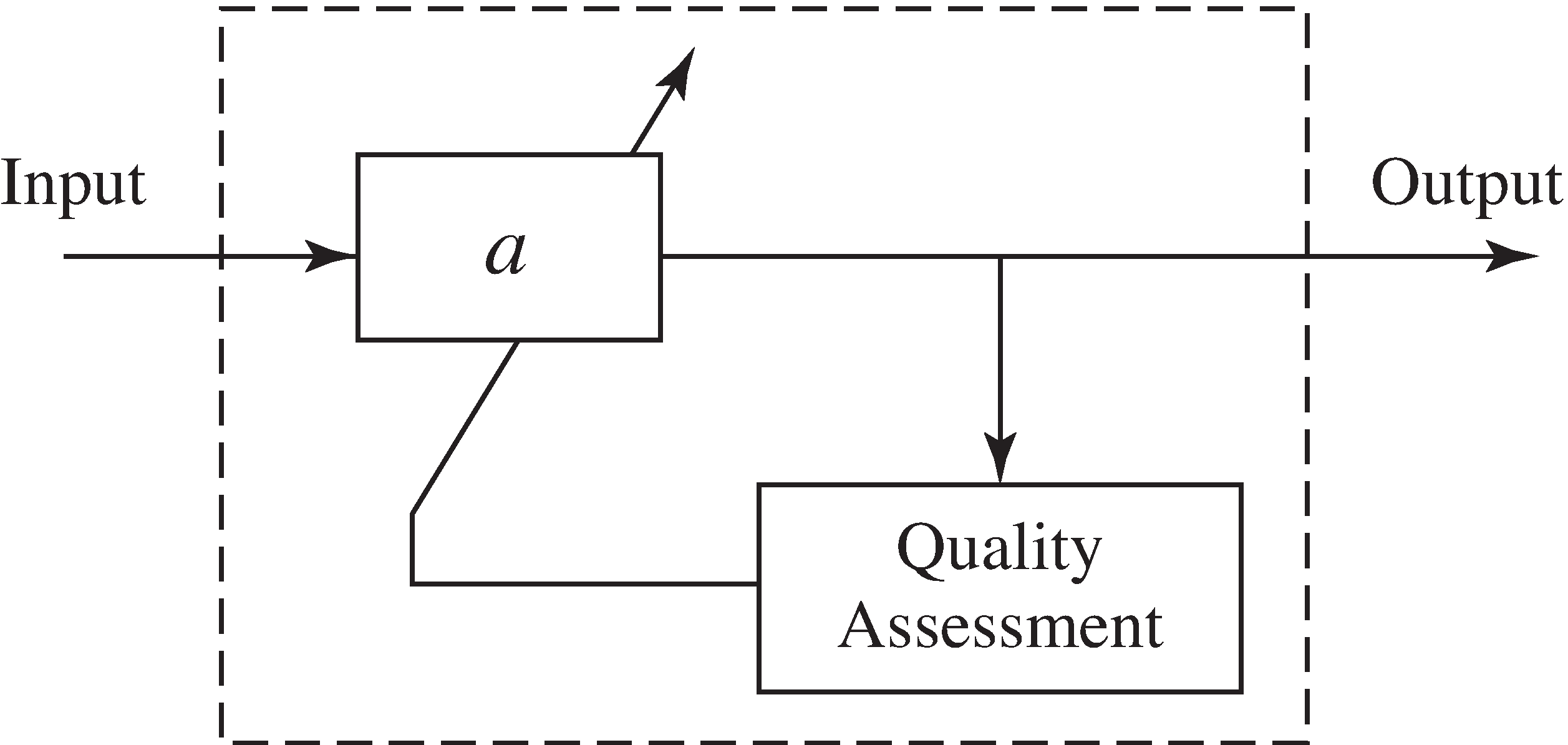| << Chapter < Page | Chapter >> Page > |
Adaptation is a primitive form of learning. Adaptive elements in telecommunication systems find approximatevalues for unknown parameters in an attempt to compensate for changing conditions or to improve performance.A common strategy in parameter estimation problems is to guess a value, to assess how good the guess is, and to refine the guessesover time. With luck, the guesses converge to a useful estimate of the unknown value.
[link] shows an adaptive element containing two parts. The adaptive subsystem parameterized by changes the input into the output. The quality assessment mechanism monitors the output (and other relevant signals)and tries to determine whether should be increased or decreased. The arrow through the system indicates thatthe value is then adjusted accordingly.
Adaptive elements occur in a number of places in the communication system, including the following:

Chapter [link] provides an introduction to adaptive elements in communication systems, and a detailed discussion of theirimplementation is postponed until then.
The bewildering array of blocks and acronyms in a typical communication system diagram really consists of just ahandful assuming a six-fingered hand. of simple elements: oscillators, linear filters,samplers, static nonlinearities, mixers, and adaptive elements. For the most part, these are ideas that the readerwill have encountered to some degree in previous studies, but they have been summarized here in orderto present them in the same form and using the same notation as in later chapters.In addition, this chapter has emphasized the “how-to” aspects by providing a series of M atlab exercises, which will be useful when creating simulations of the variousparts of a receiver.
The intellectual background of the material presented here is often called Signals and Systems . One of the most accessible books is
Other books provide greater depth and detail about the theory and uses of Fourier transforms. We recommend these as bothbackground and supplementary reading:
There are also many wonderful new books about digital signal processing, and these provide both depth and detailabout basic issues such as sampling and filter design. Some of the best are the following:
Finally, since M atlab is fundamental to our presentation, it is worth mentioning some books that describethe uses (and abuses) of the M atlab language. Some are:

Notification Switch
Would you like to follow the 'Software receiver design' conversation and receive update notifications?